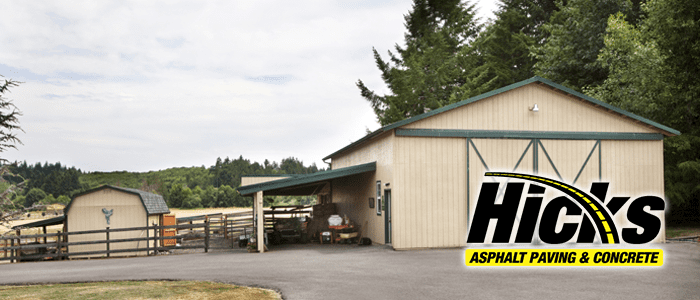One of the most commonly used materials in our modern world is concrete – A mixture of lime (cement), water, and sand into a ratio that stabilizes into a material relatively uniform. That mixture becomes a quick-to-set material and quick to dry into a reinforceable stone-alloy with high compressive strength capable of supporting our buildings. Concrete has formed the foundations of our civilization for generations, and now, a relatively new invention on the market has been catching the eye of contractors everywhere. This new material, dubbed self-healing concrete, has the ability to reseal the wounds in our, unfortunately, relatively crack-prone infrastructure.
Causes of Cracks in Concrete
Unfortunately, our familiar stone-alloy has a sad history of falling victim to Mother Nature’s wrath. Tensile stresses on the material form micro-cracks that water soon gets into. Then, in the winter months, freeze and expand, deepening these issue areas. These structural weaknesses will cause the initial wound to grow, develop, and expand until it eventually reaches the concrete’s reinforcement rods. Once there, the rods themselves begin to corrode due to exposure, causing severe damage to any building’s structural integrity.
Common Repairs
Usually, when issues in integrity arise, the problem areas must be repaired with bonding agents as quickly as possible; elsewise the concrete’s damage might become so severe that salvaging the foundations becomes near or utterly impossible. The challenges of these repairs can skyrocket prices due to location; for instance, being buried beneath the ground, difficult to reach, or at extreme heights where the greater danger for workers might arise.
Thus, entrepreneurs have been hard at work to come up with solutions.
Variations
Two rivaling methods of self-repair for our concrete have arisen within the ranks of scientists and theorists. Both methods have merit, and both methods have a variety of branch-offs in circulation and testing.
These two primary types of self-healing concrete are:
- Concrete that is imbibed with bacteria that reform lime into seals, keeping the concrete stable and secure far longer than the contemporary material.
- Concrete is filled with tiny capsules of fluids (often resin) that, when cracks appear, leak from the foundation and flood into whatever crevice that might form.
The application of both these types can be used in high-strength buildings with a higher bearing capacity, concrete that lasts far longer, better roads with less need of constant repair, and for basements that are far more prone to moisture-caused ruptures.
Bacterial Concrete
Bacterial concrete is the variation with a variety of oxygen-feeding bacteria residing within. These bacteria will germinate and transform the oxygen from cracks into limestone. This seals off any ruptures from further damage. The lack of oxygen from their consumption will also help prevent oxidization in each foundation’s steel cores. Thus, potentially expanding the lifetime of any structure to roughly two centuries.
The common variants of bacteria used are:
- Bacillus balodurans, Bacillus pasteurizing, Bacillus pseudofirmis, Bacillus subtillis,Bacillus sphaericus, and, Bacillus cohnii
- Eschericia coli
All of which are similar species. Their presence is a boon in boosting compressive tolerance for concrete.
Fluid-Capsule Concrete
A common variant of fluid-capsule self-healing concrete relies on materials like cyanoacrylate, epoxy, or polyurethane. This self-healing method relies on a trigger mechanism, usually the moisture’s presence, to instantly release a mixture of material to fill a wound with sealant instantly. Once the packets feel the elements, they will usually cure quickly and ensure no further damage can befall a foundation.
Advantages and Disadvantages
The material has several weaknesses and strengths to consider when they’re more readily available for market usage. Keep these in mind when you have the option to consider them for construction purposes.
The advantages are:
- Greater longevity than traditional concrete
- A lower maintenance cost
- Much higher compressive strength for more robust builds
The disadvantages are:
- Cost of the product itself
- Knowledgeable contractors using the product are not widely available
- There is no standardized code for the usage of self-healing concrete





